Back in Padang , I took a boat to Siberut Island , the northernmost island of the Mentawai Islands. The boat, quite large and stable, set sail at 8pm and arrived in Siberut when the sun came up the next day.
Tourists go to Siberut for surfing or experiential jungle tourism. I met some surfers on board, but no one who wanted to trek around the island and when I arrived I negotiated with the guides. In the end I came to an agreement with Sarul, a guy who lives in the jungle with his family and who is local (he speaks the language “mentawai”) to do a tour of 4 days and 3 nights and visit 2 families.
It was good, but the fact that I was the only customer and that he didn’t earn as much as if we were a bigger group made him not too motivated, and we didn’t go too far up the river to the more remote towns, we didn’t walk much through the jungle and I spent hours and hours sitting and watching the locals socialize talking Mentawai without understanding anything. However the experience was very interesting. Here is some info on how some tribes live in Siberut.
Visiting a local family
On the morning of the first day, we took a “pompong” (wooden canoe) and went up the river for an hour and a half. We arrived at the home of a family made up of the grandmother, her husband (who was out and was returning in a few days) and a couple with 3 children, who received us with the local greeting “Aleuita”.
They have 3 types of buildings: the “Sapó”, a small building that functions as a corral, and the “Uma” and the “Rusuk”, two larger buildings, the first with a central kitchen and the second with 2 kitchens in the extremes, one for men and one for women.
All the houses have decorations inside made of wood in the form of birds and herbs that simulate flowers to please the wooden house by the fact of having cut it, reincorporating the elements of the forest. They also put skulls of domestic animals (pigs, chickens) looking inside the house and some wild animals looking outside (monkeys and wild boars), to protect the family. The houses are elevated and the pigs live below, they roam happily collecting what the humans throw at them from above.
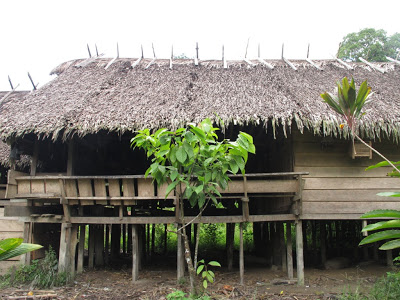
Typical elevated house in Siberut
Soon after we arrived we ate. The diet is based on «sagoo», a palm tree that grows in the jungle and that they use for everything: they make flour and fill canes or wrap it with the same palm leaf and roast them over a fire. The result is a cane where the crumb from inside is scratched or a long “churro” with a rubber consistency that is like a kind of bread, respectively.
Apart from that, women catch fishes and shrimp in the river. The 50-year-old grandmother dived for minutes underwater to get some river clams (“codiai”). They also incorporate into the diet the boiled seeds of a green fruit («claui»), which have the taste and consistency of a chestnut combined with a broad bean, the “tamara” or larvae inside the fallen trunks of the «sagoo» and what they have hunted in the forest: a squirrel (“loga”) or some little birds.
In Siberut there is no need to set the table: there is no table or cutlery, you eat directly from the dishes placed on the floor with your hands. What is left over is thrown down the railing or passed between the wooden slats on the floor for the pigs to eat. The remains in the floor are eaten by cats and dogs, which must always be careful not to be beaten with a stick, and then they sweep it everything is clean!
After each meal, they socialize, chatting for a long time, smoking, and the women make small baskets with the “sagoo” leaf to put rice inside and boil it or make ropes from vines and jungle fibers to repair the roof of the houses.
A celebration to inaugurate a Sapó and poisoned arrows
The next day at noon we took a “pompong” again and went to visit another family, Aman and Baieresiti, with their young son named Roba. Between houses or to go to the river (which is also the shower and the sink), you move balancing over logs, between pigs and chickens that eat pieces of the trunk of the sago.
Some family members are dressed in conventional clothes, and others in a kind of “loincloth.” When they are adults they get tattoos that are related to the tribe they belong to.
The next day, the neighboring family, guided by Robertus, held an opening ceremony for a “sapó”. For that, they killed a three-month-old pig and 5 chickens.
Before killing the animals, they brush some herbs around the neck and body and ask their forgiveness for taking their life:
They make like a “blood sausage”, but it is more a soup than a sausage. I asked them if they make any kind of sausage, but they looked at me strangely when I explained what it was. Too bad I am a city guy, if not I would teach them how to make “botifarres”!
To accompany the meal we ate “supet”, some “taro” “churros” covered in grated coconut, “manam”! (delicious).
After eating we went with Aman to the forest to make poison for the arrows. We collected leaves of «lagi», ginger root («baglau»), some very pungent little bugs («daro») and a root «laingit». Aman crushed everything and squeezed the juice, which he spread over the metal tip of the arrows and set with fire.
I don’t know what part of all this they do for the tourist or it is real, the truth is that they have enough western elements (chainsaws, oil lamps, motors for the “pompongs”), but they are also very self-sufficient to obtain food from the jungle. They sell the dried cocoa beans, chickens and pigs for rice and the other things they need.
At night, we went hunting with Sarul and his cousin Agus, with the shotgun. Luckily, they didn’t catch any birds! For me, it is so strange that they hunt little birds just for fun as for them that tourists do not stop taking photos of everything we see.
After dinner, they did another long session of storytelling, many of ghosts and souls wandering through the jungle and it was nice to see them so relaxed and enjoying being together, still not understanding what they were saying.
A boat trip that I will never forget
The next day we said goodbye and I went down the river with 9 more people in a “pompong” towards the coast. I stayed in the town of Muara Siberut and I relaxed playing and losing at chess with the locals and discovering “te telur” (tea with egg yolk and condensed milk). And the next day I was awakened again by the prayers of the mosque at 4.30 in the morning instead of the “pig growling loudly” and the roosters crowing from the villages.
To end the Siberut adventure, I came back with a smaller boat than the one I came in (there are only 2 boats per week), all made of wood. At night the entire surface of the ship was covered with sleeping people and the ship moved excessively in the middle of the storm from left to right, with the wood making a loud screeching in the midst of big waves. The woman sleeping next to me had a scared face and occasionally said a couple of sentences that could be “this will sink, this will go to the bottom.”
I think that Allah, God, the animistic Gods of the Mentawais and some others worked hard because the next morning we arrived safe and sound at the port of Padang.
Cheers,
Yep Yep Yep

ps: more photos at https://picasaweb.google.com/109101372812336982551/Siberut
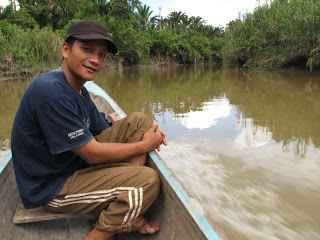
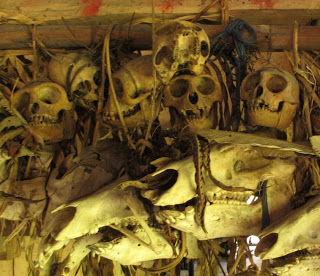
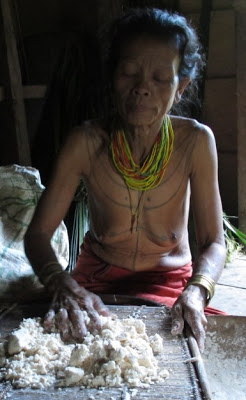
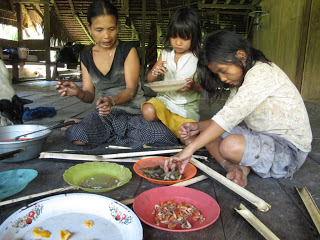
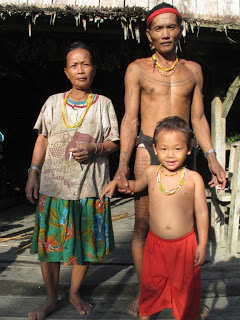
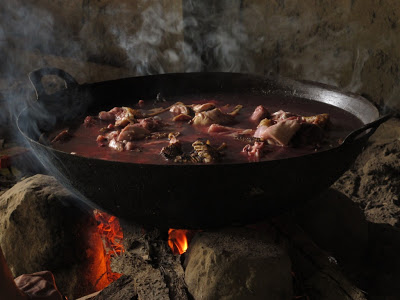
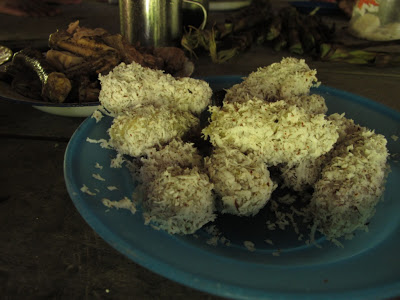
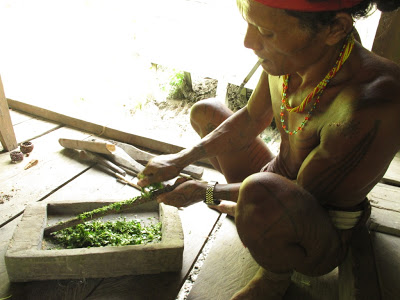
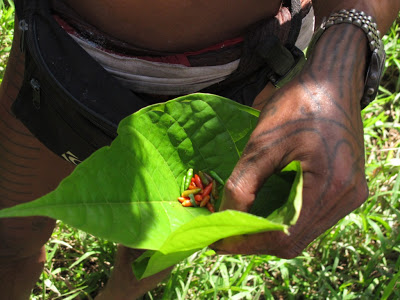

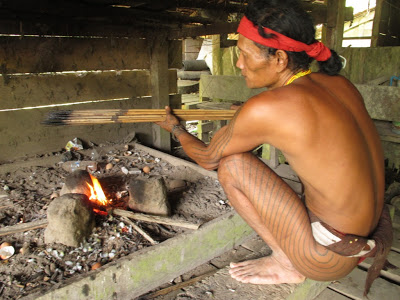
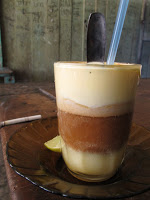
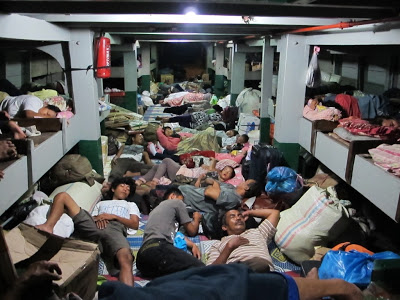
Deixa un comentari